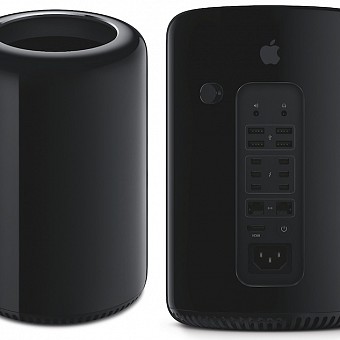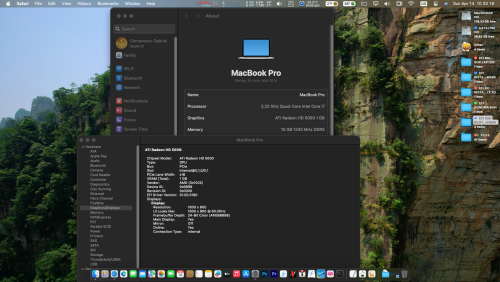
The wait is finally over, Tim Cook made good on his promise of doing something special for the Mac Pro.
Apple today gave a sneak preview at WWDC of its all-new Mac Pro that its engineers are still working on, unveiling a relatively diminutive black cylinder form factor that is dwarfed by its outgoing predecessor.
Like the current Mac Pro, it's been designed around air flow, but with cool air being drawn in from underneath and hot air being expelled upwards, not too dissimilar from the ill-fated G4 Cube from 2000.
Indeed, it's in fact smaller in size than the PowerMac G4 Cube, at just 6.6" diameter and 9.9" tall, compared to the Cube which clocked in at 7.65" square, and 10" tall due to its elevation for air intake and cables into the bottom.
Based on the new-generation Intel Xeon E5 chipset, the new Mac Pro will pack 12 cores like the current model, but with PCI Express gen. 3 and 256-bit-wide floating-point instructions.
A first for any Mac are dual GPUs as standard, with the ability to power up to three 4K resolution monitors(!). Apple are hard at work on an updated version of Final Cut for video editors to take full advantage of this cutting-edge hardware. The GPUs are AMD FirePros with 6GB of VRAM.
Like with all current Apple hardware, the new Mac Pro does away with legacy technology such as optical drives and hard disk drives. Instead, storage is handled by next-generation PCIe flash storage.
Unsurprisingly, most of the size and weight loss is down to the removal of the PCI slots, meaning expansion is handled solely through the 6 Thunderbolt 2 ports (up to 20Gb/s) on the rear of the new Mac Pro - illuminated by white LEDs no less. Connectivity is rounded off with USB 3, Bluetooth 4.0, 801.11ac Wi-Fi, dual Gigabit ethernet and HDMI, plus audio I/O.
No word on an exact release date, which is no surprise given the uncharacteristic nature of this "preview", but one could hazard a guess that it may ship with the newly announced Mac OS X 10.9 "Mavericks". Will we finally see a black Apple mouse & keyboard to match the svelte gloss black gorgeousness of this new Mac Pro? Maybe even some high-end Retina Cinema Displays to boot? Place your bets now...
Head on over to Apple's new Mac Pro preview page on their website for more juicy pics and details.










Recommended Comments